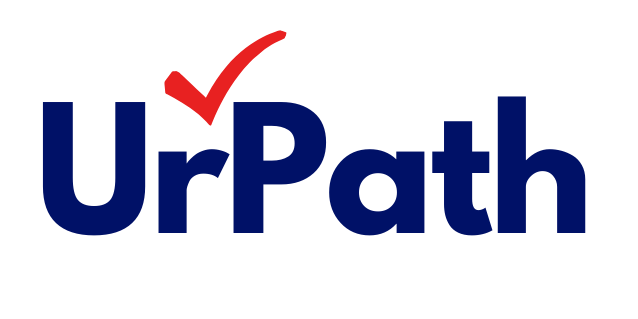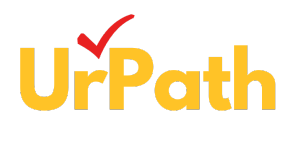Nurturing Leads Through the Funnel
Stephanie Wu • October 29, 2024
Book Your Free Initial Consultation Today
Turn MQLs into Revenue: The Power of Lead Nurturing

Introduction
While generating Marketing Qualified Leads (MQLs) is crucial, it’s only the beginning of the sales journey. To achieve organizational success, it’s essential to nurture leads further down the funnel. This blog will discuss the importance of transitioning MQLs into Sales Qualified Leads (SQLs) and ultimately Sales Accepted Leads (SALs) through effective lead nurturing strategies and Service Level Agreements (SLAs).
From MQL to SQL: Qualifying Leads for Sales
Once a lead meets the scoring criteria for an MQL, sales development teams evaluate their potential to become SQLs. SQLs demonstrate stronger purchase intent and meet specific criteria that make them high-priority targets for sales efforts.
Qualifying SQLs
- Discovery Calls: In-depth conversations to understand the lead’s needs, pain points, and timeline for purchasing.
- Assessing Budget, Authority, Need, and Timeline (BANT): This qualification framework helps sales teams determine if the SQL has the necessary budget, decision-making authority, specific needs that your product addresses, and a reasonable purchase timeline.
To Call or to Email: The MQL Dilemma
One of the perennial questions in sales development is whether to prioritize calls or emails when reaching out to Marketing Qualified Leads (MQLs). The answer isn't always straightforward and often depends on various factors, including:
- Lead Quality: Higher-quality MQLs, often indicated by strong engagement metrics or ideal customer profile (ICP) fit, may warrant a more immediate, personalized approach like a phone call.
- Lead Preference: Some leads may prefer email communication, while others may be more receptive to a phone call or LinkedIn InMail message.
- Sales Team Capacity: If your sales team is overwhelmed, prioritizing email outreach can be a more efficient way to engage with a larger number of leads.
Who Writes the Emails?
While sales development representatives (SDRs) are typically responsible for executing outreach, the creation of effective email templates is often a collaborative effort between marketing and sales. Marketing can provide the initial framework, ensuring brand consistency and messaging alignment, while sales can offer insights into what resonates with prospects and personalize the message for each MQL.
CRMs for Efficient MQL Management
A robust CRM is essential for managing MQLs effectively. Here are a few popular options:
- HubSpot: A comprehensive CRM platform that offers features like lead scoring, email marketing, and sales automation.
- Salesforce: A powerful CRM solution that can be customized to meet specific business needs.
- Pipedrive: A user-friendly CRM that focuses on sales pipeline management and deal closure.
By carefully considering these factors and leveraging the right tools, sales development teams can optimize their MQL outreach strategies and drive revenue growth.
Transitioning to SAL
Successful discovery calls result in the lead being classified as a Sales-Accepted Lead (SAL). At this stage, the lead is passed from the sales development representative to a more senior account executive, who reaches out to the SAL through various channels like email, phone, or social media to nurture the relationship and hopefully close the deal. If the SAL is successfully converted into a customer, the sales process is complete. By using the SAL process, companies can improve their sales efficiency and focus on the most promising leads, increasing their chances of closing deals.
The Role of SLAs In Revenue Growth
A service level agreement (SLA) between marketing and sales is a formal agreement outlining expectations, goals, responsibilities, and performance metrics for both teams. It ensures alignment, accountability, and transparency. Key components of a marketing-sales SLA often include:
Lead Generation and Qualification:
Marketing's Commitment:
- Deliver a specific number of qualified leads per month or quarter.
- Ensure lead quality by adhering to a defined lead scoring model.
- Provide accurate and up-to-date lead information, including contact details, company information, and engagement history.
Sales' Commitment:
- Contact all qualified leads within a specified timeframe.
- Provide feedback on lead quality and conversion rates to the marketing team.
- Update the CRM system with accurate and timely information on lead interactions and outcomes.
Lead Handoff and Follow-up:
Marketing's Commitment:
- Provide clear and concise lead handoff documentation, including lead source, qualification criteria, and relevant marketing materials.
- Schedule regular meetings with the sales team to discuss lead quality, pipeline health, and any issues.
Sales' Commitment:
- Acknowledge receipt of leads within a specified timeframe.
- Follow up with leads consistently and persistently, adhering to the established sales process.
- Provide regular updates on lead progress and pipeline forecasts.
Data Sharing and Reporting:
Marketing's Commitment:
- Provide timely access to marketing analytics and reports to the sales team.
- Share insights on customer behavior, market trends, and competitor activity.
Sales' Commitment:
- Share sales activity data, including call logs, email correspondence, and meeting notes, with the marketing team.
- Provide feedback on the effectiveness of marketing campaigns and lead generation efforts.
Performance Metrics:
Key Performance Indicators (KPIs):
- Number of qualified leads generated per month
- Lead conversion rate
- Average deal size
- Sales cycle length
- Customer acquisition cost
Regular Review and Adjustments:
Both teams will meet regularly to review performance metrics, identify areas for improvement, and make necessary adjustments to the SLA.
By establishing a clear and measurable SLA, marketing and sales teams can align their efforts, improve efficiency, and ultimately drive revenue growth.
Benefits of SLAs
- Bridging the Gap: SLAs prevent conflicts and misalignment by defining lead handoff criteria and quality standards.
- Setting Measurable Goals: Clear benchmarks for both marketing and sales teams.
- Feedback Loop: Continuous improvement through feedback on lead quality.
Personal Experience: When SLAs Fail
Without leadership enforcement and a shared vision, even well-designed SLAs can be ineffective. In my experience, organizations that prioritized individual targets over collaboration often struggled to meet pipeline goals.
Focusing on the North Star Metric: Pipeline
Ultimately, organizational success depends on a healthy and growing pipeline. By optimizing your funnel through effective lead nurturing and clear SLAs, you can achieve your pipeline targets and drive revenue growth.
Conclusion
Nurturing leads through the funnel is critical for any company or higher education institution. By effectively qualifying leads, transitioning them to SQLs and SALs, and implementing strong SLAs, organizations can maximize their marketing and sales efforts and achieve their revenue goals. Reach out to UrPath to learn how we can help you optimize your funnel.
Got Any Questions?

Entering the U.S. education market can unlock transformative growth for EdTech companies—but it requires more than just a great product. To truly resonate with U.S. institutions, decision-makers, and students, foreign EdTech firms must understand the landscape, build trust, and execute a strategic, localized approach. Here are the essential steps to building a strong U.S. market strategy—and how we can help you every step of the way. 1. Understand the U.S. Education Ecosystem The U.S. education system is complex and decentralized, with thousands of independent decision-makers across K–12 districts, higher education institutions, and public agencies. It’s critical to understand how funding works, who holds purchasing power, and what challenges institutions are trying to solve. We help you navigate this landscape by providing market insights and identifying the right entry points for your solution. 2. Tailor Your Messaging for the U.S. Audience What works in one market may fall flat in another. U.S. educators and institutions care deeply about outcomes, alignment with curriculum standards, ease of implementation, and student impact. Your marketing materials, demo content, and success stories must speak directly to these concerns. Our team works with you to localize your messaging, refine your value proposition, and ensure your brand connects with the right stakeholders. 3. Build Early Trust Through Field Marketing Participating in local conferences, school district events, or university expos is a great way to meet decision-makers and showcase your commitment to the market. Being physically present helps establish trust—especially in a relationship-driven environment like education. We support your field marketing efforts with planning, outreach, and on-the-ground execution. 4. Establish Strategic Partnerships Collaborating with the right partners—whether it’s a local distributor, a university department, or a state-run initiative—can accelerate your growth. These relationships open doors to pilot programs, case studies, and future expansion. Through our network, we introduce you to key institutional contacts and help you form partnerships aligned with your mission. 5. Commit to Long-Term Engagement Success in the U.S. market rarely happens overnight. It requires persistence, follow-up, and a willingness to listen, learn, and adapt. Schools and universities want to know you’ll be there for the long run. We help you build a U.S. presence with sustained marketing support, strategic planning, and relationship-building that lasts. Ready to Grow in the U.S.? If you're an international EdTech company ready to connect with the U.S. market in a meaningful way, we’re here to help. Our U.S. Strategy Support service is designed to guide you through every stage—from market entry to long-term success. Let’s explore what’s possible—together.

South Korea is a global leader in education and technology, with strong public investment in lifelong learning, digital upskilling, and future workforce development. For EdTech companies looking to expand, Korea presents a unique opportunity—but only for those who are ready to approach it with insight and intention. Entering this market requires far more than translating your content or launching a local version of your platform. Success demands a deep understanding of Korea’s education culture, government priorities, and the trust-based relationships that drive decision-making. That’s where our Korea Strategy Support comes in. Deep Market Insight for Real Growth We help you understand Korea’s education landscape from the inside out—so you can enter with clarity, not guesswork. This includes: How public education is structured across national, regional, and local levels Who the real decision-makers are in institutions and government What current challenges and trends are shaping the market How EdTech solutions are evaluated and adopted in both K–12 and higher education Our goal is to give you the strategic insight needed to make smart decisions and avoid costly missteps. We Connect You to the Right People We don’t just share knowledge—we open doors. Over the years, we’ve built trusted relationships with Korean universities, vocational schools, lifelong learning centers, and regional government agencies. We’ll help you: Identify the right institutional or public-sector audiences Facilitate introductions and support outreach efforts Position your offering to meet local goals and cultural expectations Form lasting partnerships built on shared educational values Whether you're looking to launch a pilot, form a licensing agreement, or scale in a specific region, we tailor the strategy around your mission and Korea’s needs. Strategy That’s Built on Trust In Korea, reputation and relationships are everything. We guide you on how to align your brand and messaging with local expectations—helping you build credibility, understand the timing of government cycles, and prepare materials that resonate with institutional leaders. With our insight and guidance, you're not just entering a new market—you’re building a meaningful presence. Let’s Explore Korea Together Korea is more than a strategic opportunity—it’s a chance to make a real impact in a country that deeply values education and innovation. We’re here to help you approach it the right way. If you’re ready to explore what’s possible, we’re ready to guide you.


